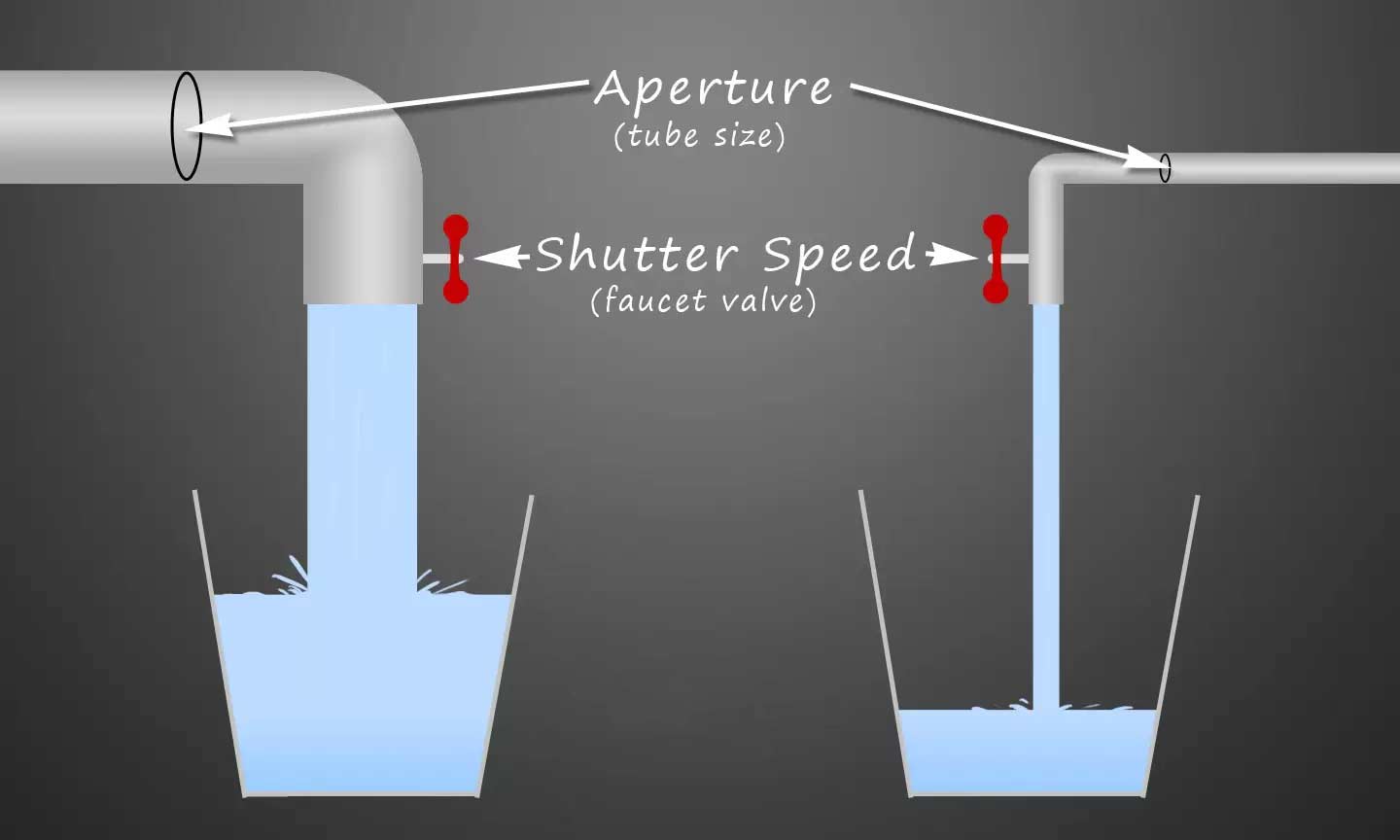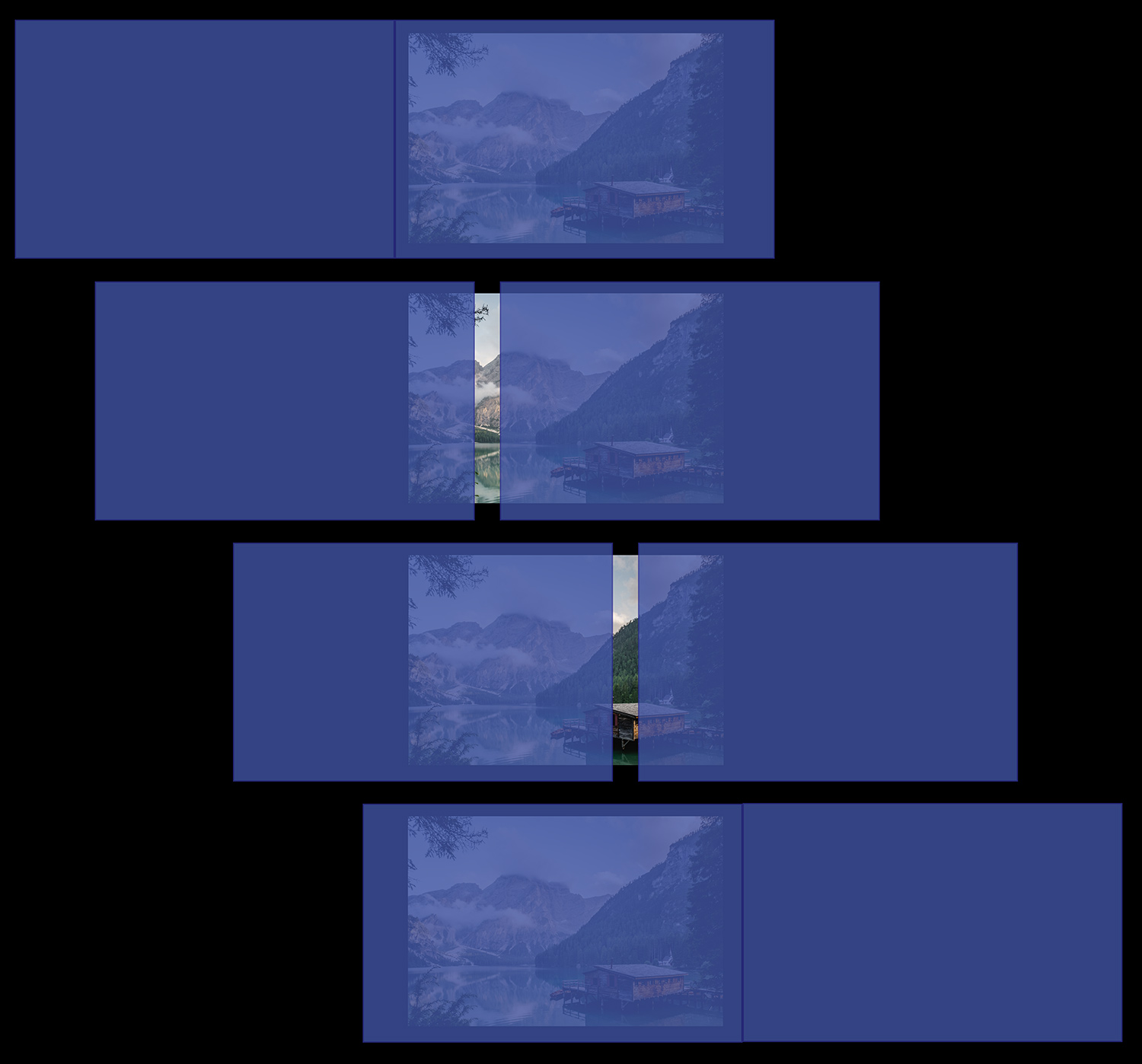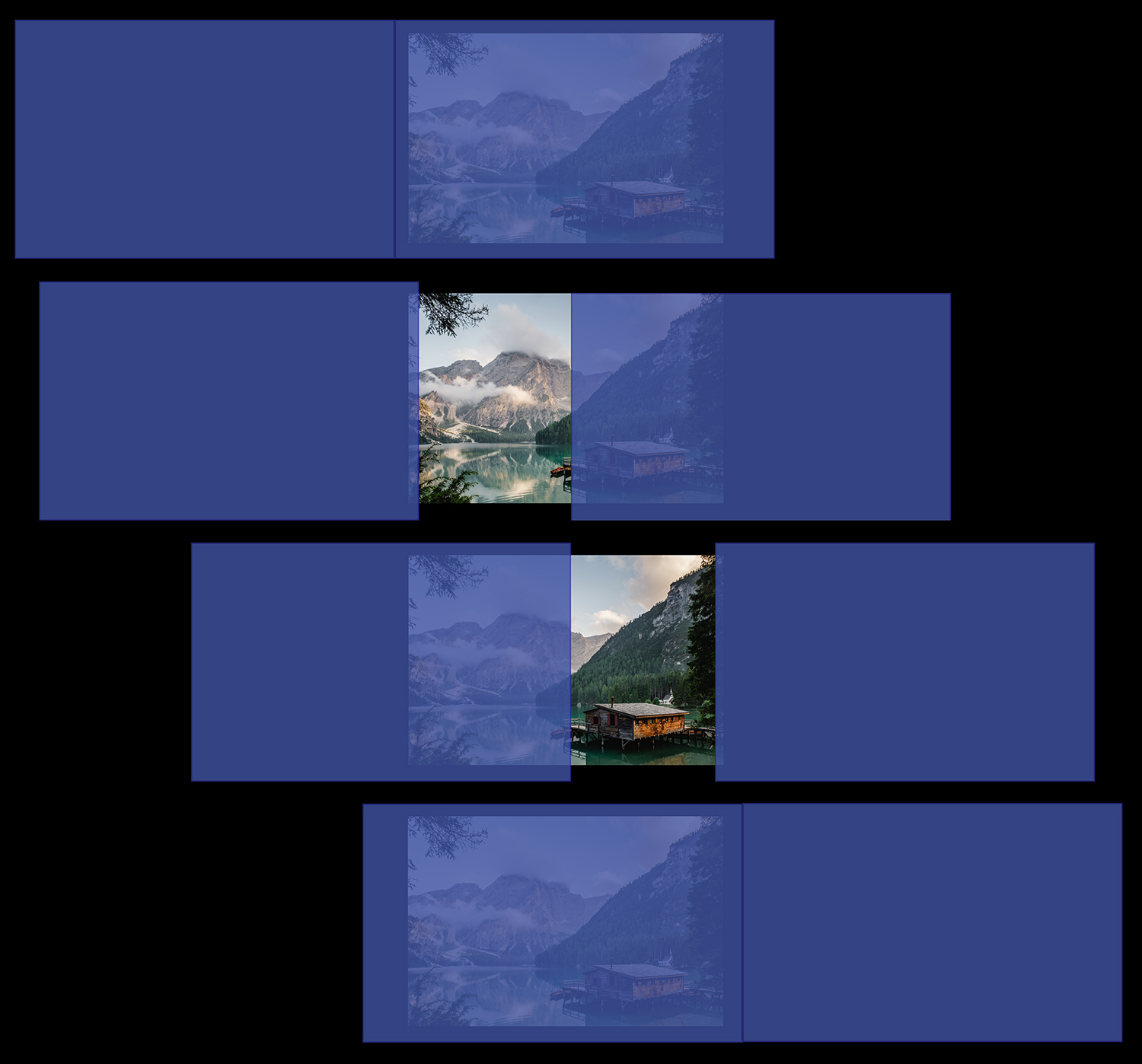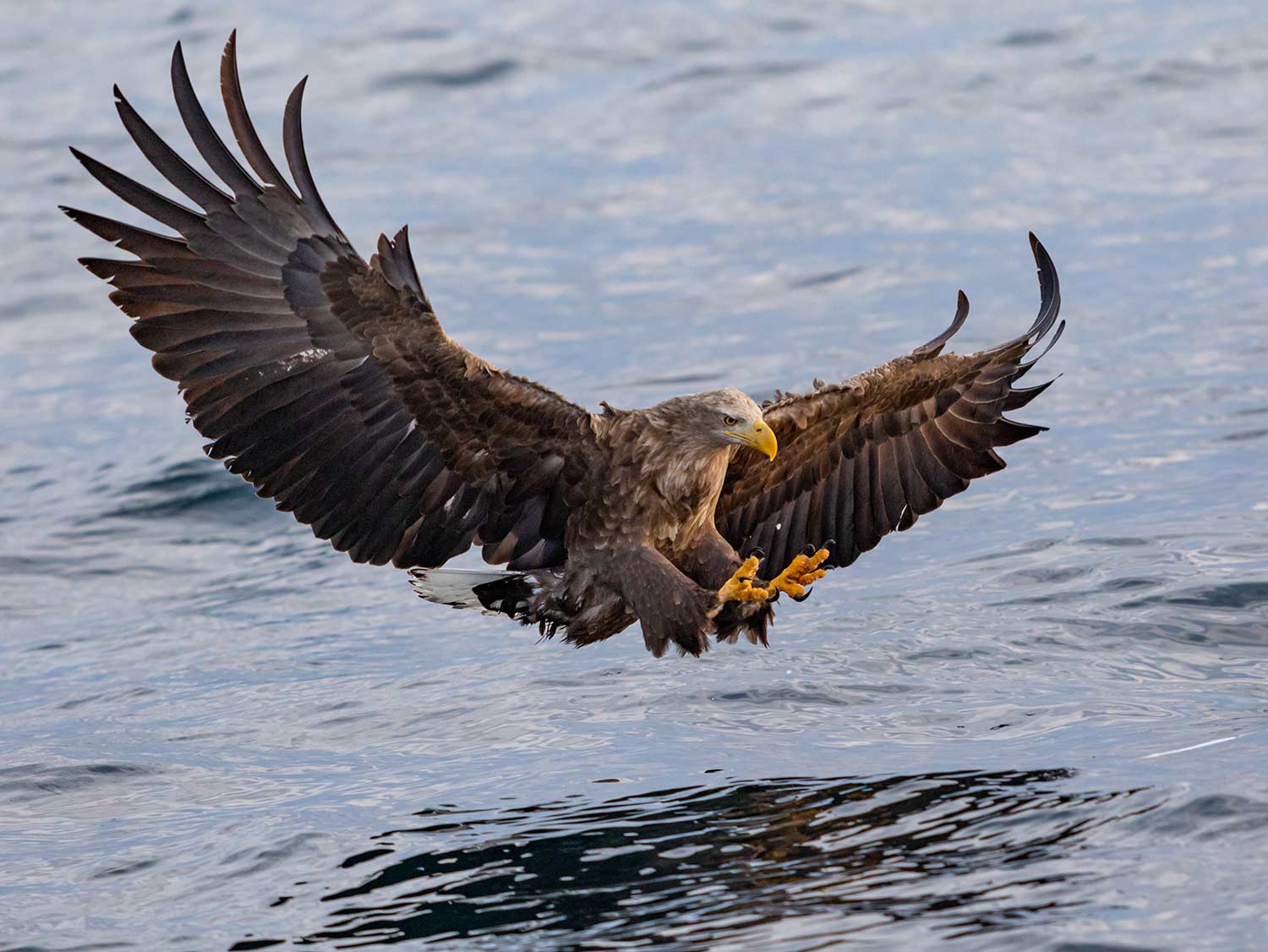What is it, how does it work and how does it affect your pictures
The simple explanation – The shutter is a mechanical device that lets light fall on the camera film or the digital sensor.
The speed at which the shutter moves determines how much light can enter the camera and how much movement is captured.
A shutter that moves quickly lets in little light and freezes movement.
A shutter that moves slowly lets in a lot of light and can create motion blur.
On your camera, shutter speeds are marked as fractions of a second. One sixtieth of a second appears on your camera as 1/60. That is how fast the shutter is moving.
Change your settings to full stops first!
For the sake of ease I would recommend you set up your camera so that when you move the dial, the number either doubles or halves depending on which way you move the control dial.
I say this because modern cameras can be adjusted by increments of what’s called a third of a stop.
Whereas a change of 1/100 to 1/200 is a whole stop, your modern camera can change from 1/100 to 1/125 to 1/160 and then 1/200.
Shutter speed (and exposure as a whole) is much easier to get your head around if the numbers (ISO included) double and halve when the dials are changed.
This way you know that if you change from 1/100 shutter speed to 1/200 shutter speed, it is moving twice as fast, and therefore letting in half as much light. It’s simply…simpler!
When playing in the menus, you may also notice a shutter marked as ‘B’ or Bulb.
Bulb mode is used for longer manually timed exposures, in this mode the shutter stays open as long as the shutter button is being pressed. This makes it possible to achieve longer exposures than the predetermined 30 seconds which many cameras cannot go beyond.
This is useful for taking night-time photographs, interiors etc. without using additional lighting.
Let’s look at how shutter speed affects photographs.

In this example, we see how changing the shutter speed affects the brightness of the image.
The slower the shutter speed, the more light is allowed in and the brighter the image.
The faster the shutter speed, the less light is allowed in and the darker the image.
We see on the left, the image is taken at 1/200 (one two-hundredths of a second), this is a fast shutter speed, in this example, the image is too dark and we need to let in more light. We refer to too dark as being Underexposed.
The shutter speed is changed to 1/100 – the shutter speed has been halved, which means we are letting in twice as much light as the previous picture. This photograph looks good.
In the final image, we have used 1/50, which again is half of 1/100, so the amount of light let in again has doubled. In this case, 1/50 has allowed in too much light in, the image is too bright. Images that are too bright we refer to as Overexposed.
The relationship between Shutter and Aperture
Both shutter and aperture control the amount of light reaching the film/sensor, but their effects are quite different.
Imagine a bucket.
Here’s one.

Firstly, remove your cat from the imaginary bucket.
We need to fill it with water.
There are two ways to fill your bucket with water – fast or slow.
If we want to fill it up fast, then we use a big, wide pipe to let in the water really quickly, turn the tap on full blast for a short period of time.
If we want to fill it up slow, then we use a narrow pipe to restrict the water, then turn the tap on to just a trickle.

Creating an accurate exposure using a combination of aperture and shutter speed works just like this.
If we want to use a fast shutter speed, which we know restricts the amount of light coming in due to it moving quickly, then we need to let a lot of light into the camera using the aperture.
That means we need a big aperture to let a lot of light in to balance out the fast shutter speed.
If we want to use a slow shutter speed, which we know will let a lot of light into the camera, we then need to restrict the amount of light coming into the camera using a small aperture.
That means we need a small aperture to balance out the slow shutter speed.
To finish off the water bucket analogy – the goal is to fill the bucket with water perfectly.
Too much and it overflows, too little and we will be thirsty!
It’s the same with your photographs.
If you fill the camera with too much light, your images will be too bright.
If you don’t let enough light into the camera, our pictures are too dark and we are left wanting more!
The size of the aperture controls the depth of field – how much of the picture will be in sharp focus vs how much of the image will be out of focus, while the shutter speed dictates how still a moving subject will appear.
Correct exposure is a combination of shutter speed and aperture setting, but the photographer can select any combination of these settings that adds up to the correct amount of light.
For example, if the correct exposure for the photograph of a persons face is 1/125 at F/5.6, the photograph will be correctly exposed at either 1/500 at F/2.8 or 1/15 F/16.
Once upon a time, the photographer had to choose between a fast shutter speed to stop a movement, or a small aperture to give a shallow depth of field. However modern technology has allowed ISO to have a greater impact on determining exposure without loss of image quality.
Most common shutter speed problem (and how to fix it)
Help! – My images are blurry, and I don’t want them to be!

What is happening here?
Your camera is trying to let in as much light as possible.
To achieve a correct exposure, the shutter is being opened for a long time. The side affect? motion blur.
The short answer is, if you don’t want motion blur, you need a faster shutter speed.
The next problem…
When you increase the shutter speed, the image will be darker because you are letting in less light.
You have two choices to balance the image and make it the correct brightness.
You can either make the aperture bigger OR if your lens cannot manage a bigger aperture, you will need to increase the ISO.
History and mechanism
Early cameras had no shutter as we know them today.
Films and chemical plates were so slow and the exposure time so long that the photographer simply removed the lens cap, then replaced it at the end of the exposure time.
No doubt you are already familiar with this type of camera from in period films and television – you know the ones, with the epic flash of light going off whilst the photographer has their head under a black cloth. The lens cap would have been removed, and a dark slide (piece of black sheet metal blocking the light) would have been removed, the magnesium ignited, and poof! Enough light for the correct exposure.

Fun fact, many early photographic pioneers lost fingers grinding the magnesium compound required to create the flash of light, it would explode in the pestle and mortar as they were grinding it down. Be thankful for what you have to work with now!
As film emulsions became more sensitive and the whole process refined, a device was needed to control the length of time the light was allowed to fall on the film.
Enter the shutter.
The majority of modern cameras can produce a shutter speed as fast as 1/8000th of a second, that is ridiculous if you think about it. From manual removal of a lens cap, to a widely available and affordable camera that can manage one eight thousandth of a second in roughly a century.
The range of shutter speeds on a camera will be the same regardless of your camera manufacturer, so don’t worry if you have a Canon, Nikon, Pentax, Sony etc. all of them will be the same.
Modern cameras often make understanding the shutter speed a little bit harder than it needs to be. That’s because modern technology has allowed camera manufacturers to create more and more exacting shutter speeds to give the photographer more and more control.
Different types of shutter
Basically, there are two main types of shutter, those that work inside the lens and those that sit just behind it.
The shutter in modern SLRs is called a focal plane shutter.
It looks like this:
The shutter in many large format cameras or older/vintage cameras with bellows you may have seen in second hand shops are typically between lens shutters or Leaf shutters. There is also another variation of this called the sector shutter, used in cameras such as the Kodak box brownie.
The between lens shutter or Leaf shutter closely resembles the aperture, and is positioned between the lens elements, near the aperture blades.
It looks like this as it opens:

It is made up of a number of thin overlapping metal blades which spring open for the time of the exposure, and then close again. As the blades start to open a small star shaped hole appears in the centre of the shutter, and grows during the exposure.
It is very light and compact and can synchronise with flash at all speeds.
Between lens shutters have two draw drawbacks. Few work at speeds of over one 500th of a second, and they are costly to produce for cameras with interchangeable lenses because each lens requires its own integral shutter and a separate means to block light from the film when the lens is removed.
As you can imagine, as the image is exposed from the centre outwards, these lenses are prone to having dark corners, otherwise called vignettes or vignetting.
The sector shutter is used on many cameras with small diameter lenses, such as the Kodak box Brownie:

It is mounted just behind the lens and consists of a spring loaded metal plate which prevents light reaching the film until the shutter release is pressed.
There is usually a choice of two speeds, indicated by weather symbols marked on the outside of the camera.
This basic idea is still used on Fuji Instax polaroid cameras. The fastest speed is used in bright, sunny conditions, and the slower one on cloudy days or indoors.

Focal plane shutters are made up of two blinds positioned just in front of the film, with an adjustable gap between them which follow each other across the film plane.
High speeds up to one 8,000th of a second are obtained by altering the size of the gap between the blinds, and lower speeds (down to thirty seconds) by holding back the second blind. Early film cameras used rubberized cloth and moved horizontally across the film, but they typically will only permit flash synchronisation at speeds up to one 60th of a second.


The first camera I ever used was an Olympus OM10 that belonged to my dad. I only realised the shutter was cloth when I put my finger through it…sorry dad.
Metal bladed shutters were invented and cameras right up to present day mirrorless cameras were fitted with them.
As a focal plane shutter is mounted inside the camera body, close to the film, it protects the film from light when the lens is changed, extra lenses do not need their own built in shutter.
Stopping movement with shutter speed
The shutter can be used to express movement in different ways, a fast shutter speed will stop or freeze movement, and a slow one will register a blurred image of a moving subject.
The very short exposure time of a high shutter speed can freeze movement, and give a perfectly still image of a moving subject.
The speed needed to stop this movement depends on three things:
- the speed of the moving subject
- the distance between the camera and the subject
- the angle at which it is travelling towards the camera
The closer the subject is the higher the shutter speed must be, but a great deal depends on the direction of the movement.
We can all agree that birds fly pretty fast, so in order to freeze there movement, we will need a fast shutter speed.

Why does it need to be a fast shutter speed?
The bird is moving quickly from left to right in this picture. If you use a slow shutter speed, by the time the two curtains of the shutter have moved across the first part of the scene, the bird will have moved considerably. The resulting image will be blurry.
Expressing movement with shutter speed
The photographer will not always want to stop the movement of the subject and sometimes a need to convey movement to the viewer is necessary in order to add impact and additional narrative to the frame.
This is achieved by using a slow shutter speed whilst photographing a fast moving subject.
Panning the camera
The most effective way to emphasise speed and movement whilst maintaining subject detail is to pan the camera.

This has the effect of keeping the moving subject sharp, whilst blurring the background, maintaining subject detail, and creating a strong feeling of speed and motion.
I imagine a bowler running in to deliver the ball in cricket, arms and legs slightly blurred, the crowd in the background a streak of colour giving directional movement from left to right, but the head perfectly sharp. Or even a Formula 1 race, the car perfectly detailed, but the advertising boards in the background a blur of colour as the car whizzes past.
To execute a successful pan, the camera follows the path of the subject, keeping pace with its movement.
It takes practice and a steady hand.
Firstly, stand with your feet a shoulders width apart to create a solid base.
Then, track the subject as it moves across your field of vision, matching it’s speed and keeping the subject in the centre of the viewfinder as it moves.
Rotate at your hips and not with your feet to execute a smooth pan. Take the picture when you feel you have matched the subjects speed and continue to move at the same speed as the subject whilst the shutter is open.
Try using one 60th of a second (1/60), or even slower. Once the technique is mastered you can use very slow shutter speed to increase the degree of background blur. You can achieve varying degrees of sharpness and blur by using a range of shutter speeds and these techniques. These combinations can for instance; blur the feet and arms of a sprinter but register the agony of exhaustion on their face.
However, take care to avoid over exposing the photograph and use the aperture and ISO to compensate for the length of time the shutter is open for.
Longer focal length lenses accentuate any camera movement as they compress perspective and make objects appear closer together.
Imagine photographing a track and field race. A 500mm lens with the runners filling the frame will make the runners and the crowd appear closer together, and emphasise movement.
If you shoot the same event on a 28mm lens, the distance between subject and background appears much greater, so an even slower shutter speed will probably be necessary to convey movement.
The closer the subject is to you and the wider the lens you are using, the faster you will need to pan in order to create a still subject with a blurred background.
Imagine you are pointing at a car moving across the horizon. You can track it with your finger very slowly. If it drives a few metres in front of you, you’ll have to pivot much, much faster.
Conclusion
Shutter speed determines how much light will fall on the piece of film or the digital sensor.
If a fast shutter speed is used, very little light will land on the film/sensor, this allows the photographer to freeze any movement in the scene.
The trade off with a fast shutter speed is that you are then reliant on the aperture to let enough light into the camera. If your lens doesn’t allow enough light into the camera to achieve a correct exposure, you will then be reliant on changing the ISO to boost the amount of light gathered by the camera.
Each element of exposure, Shutter Speed, Aperture and ISO each has an effect on the amount of light gathered by the camera, but they also each have a trade off.
It is up to you as the creative in control of the camera to choose what best suits your needs.
Fun Test
Now you know how a shutter works mechanically, can you guess why this happens?
